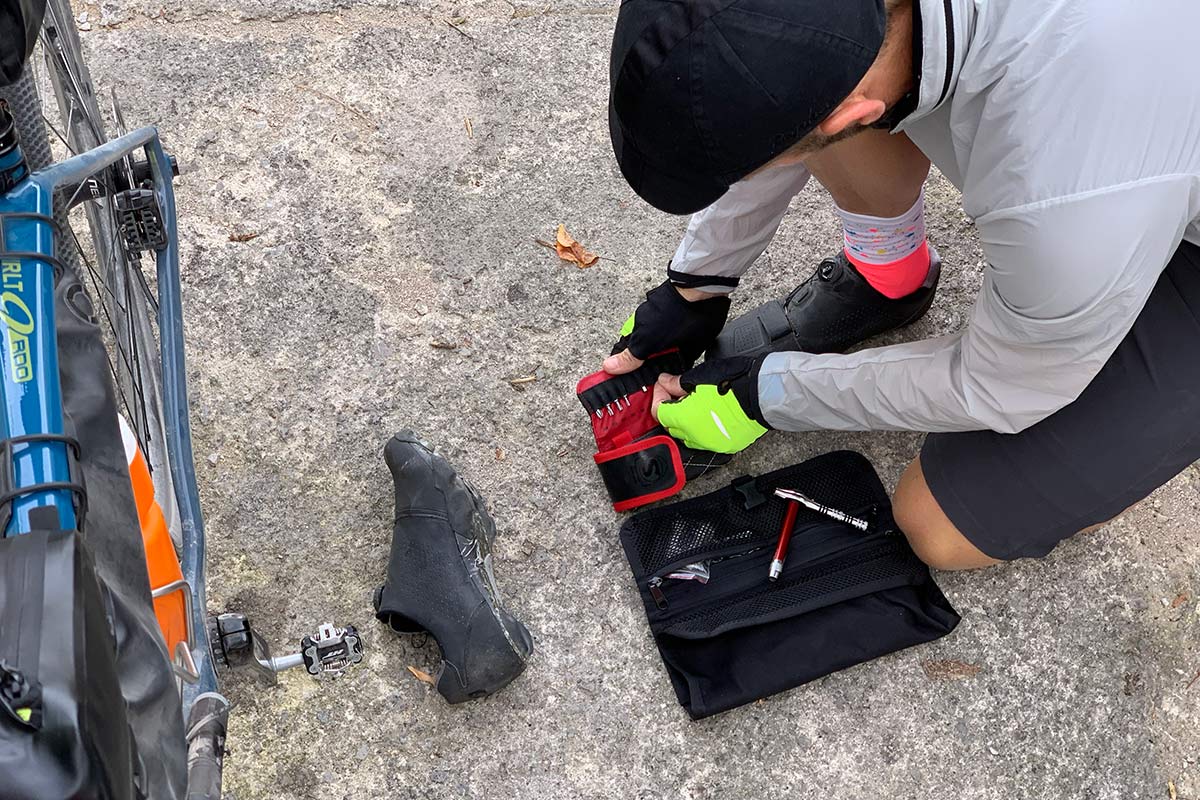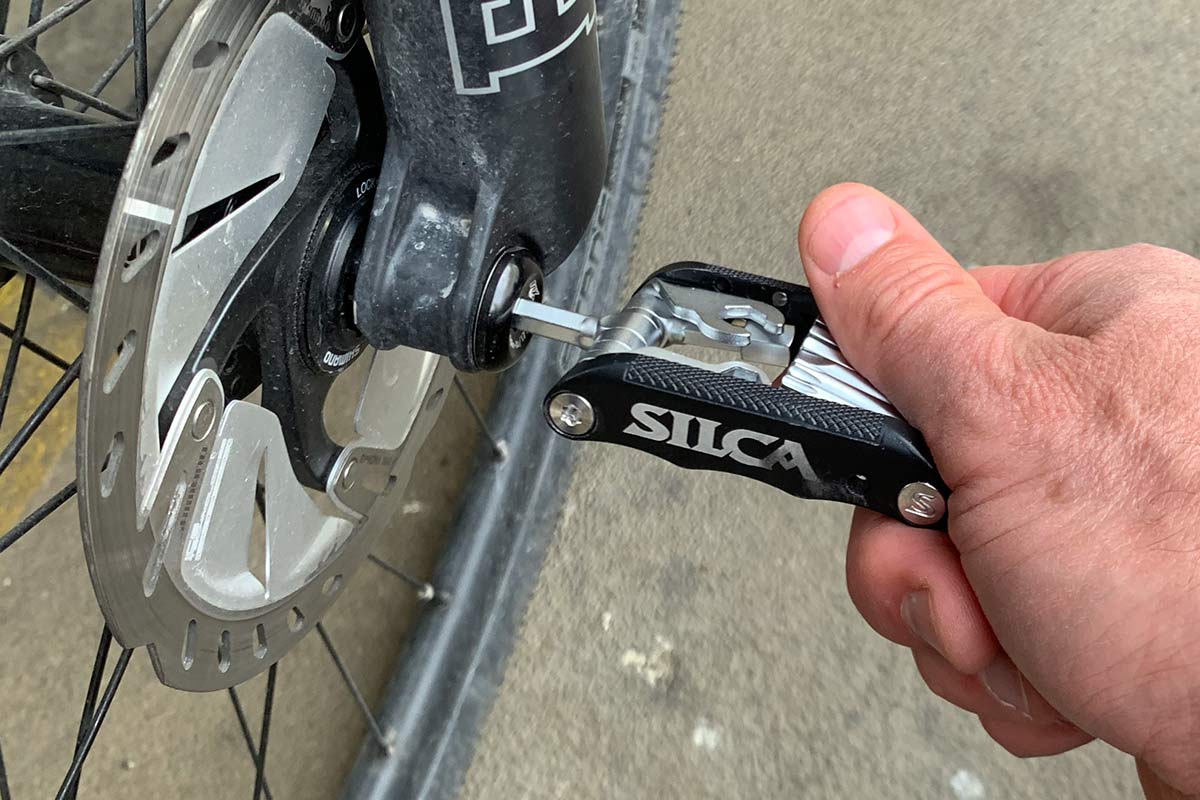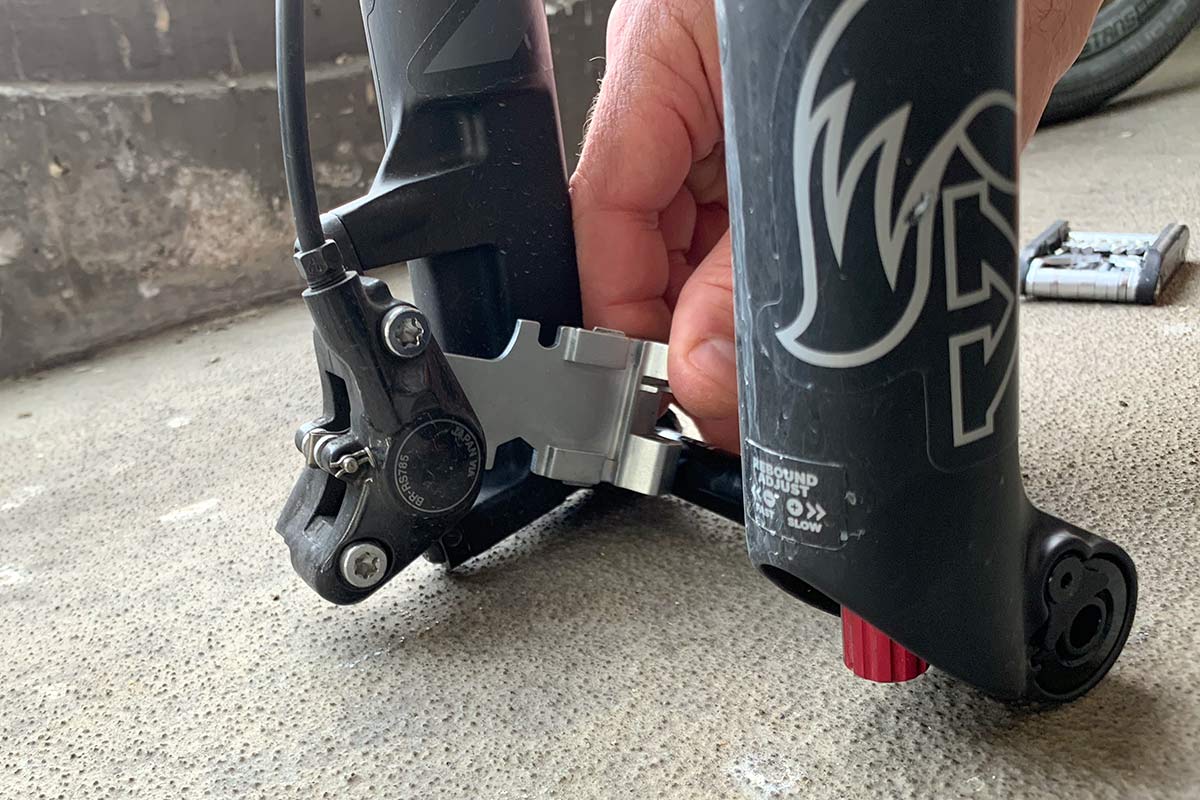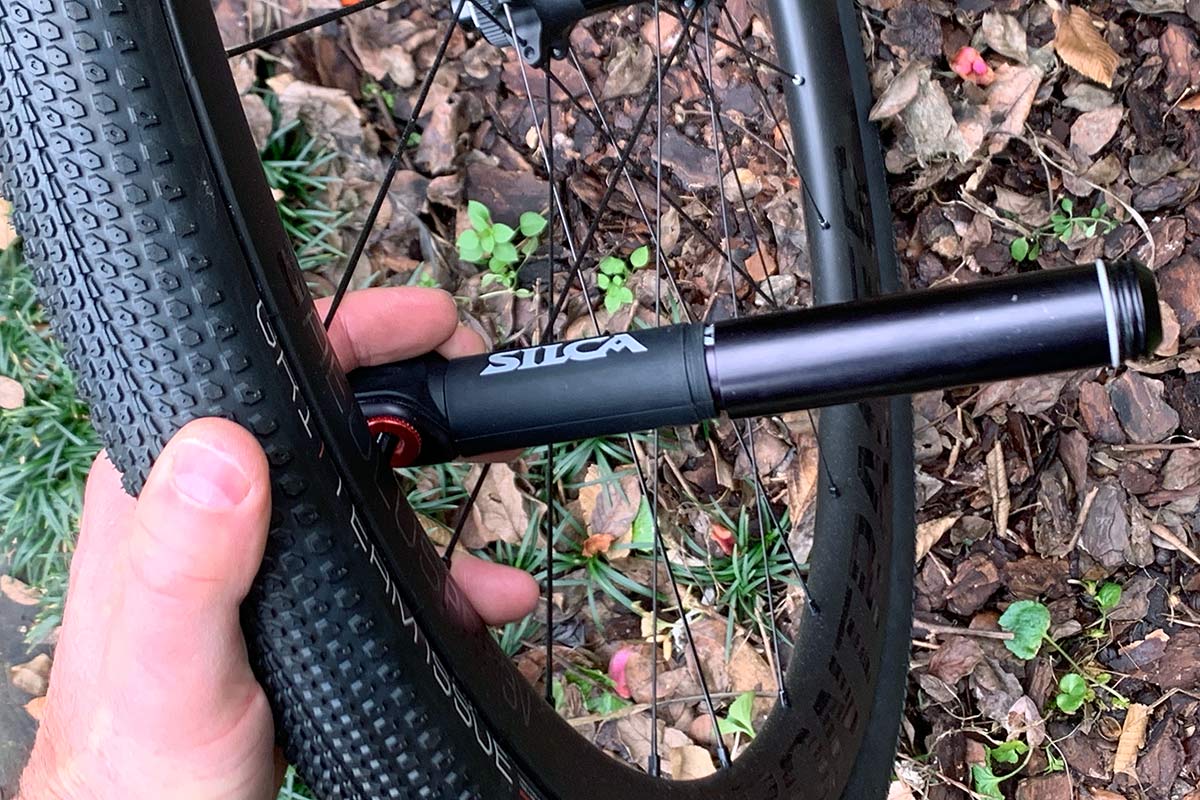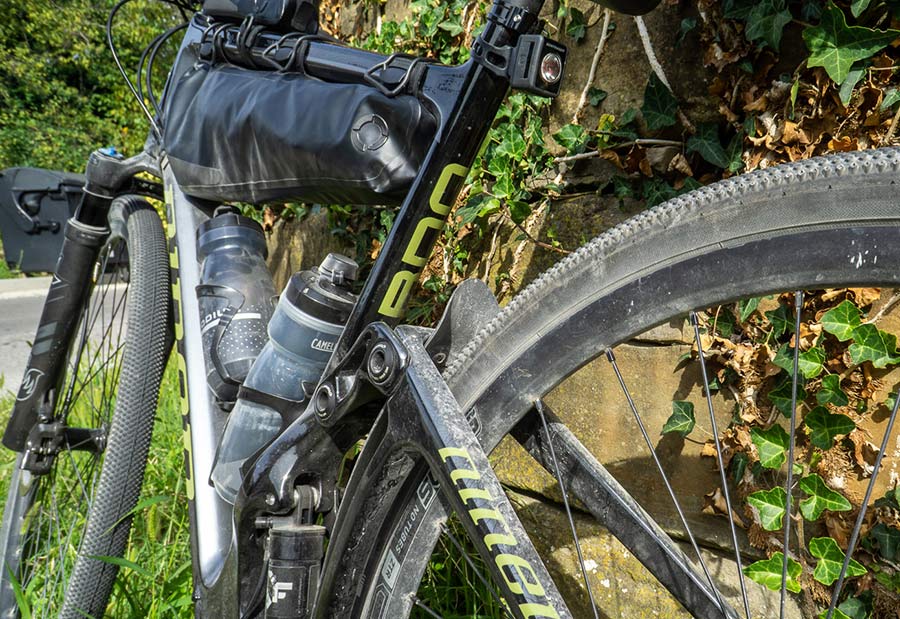This past fall Tyler and I brought along Silca’s lineup of cycling instruments to Slovenia. Svelte and functional, they couldn’t have been a better match for the ride. Silca’s known for creating precision items that sit at the top end of the price spectrum, but I have a story that helps put their positioning into perspective:
At my first job, I palled around with a group of surgeons. Always a hot topic was the “tool” vs. “instrument” discussion (we were a lively group). “Tools are for the shed,” the scrubs stood their ground. “Medicine is about precision.” Surgeons unquestionably use instruments.
Precise, easy to use, and machined with gorgeous presentation, with delicate gauges and handsome finishes, Silca’s lineup of tools and pumps arguably lean more instrument than tool. Here’s how they handle the real world…
SlLCA’s T-Ratchet and Ti-Torque kit – $100
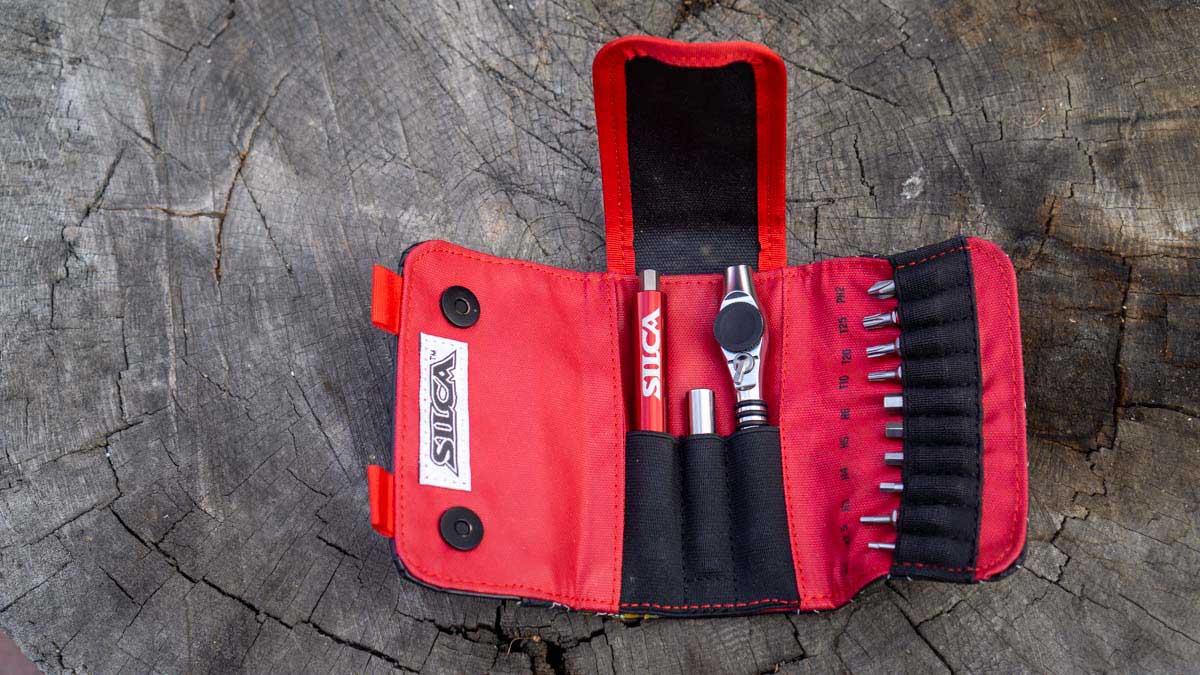
If you ride carbon, sooner or later you learn the importance of torque. A loose fitting can be a pain (and potentially dangerous). Too tight, and it can be disastrous. Most damage to carbon frames and components happens when an overzealous wrench bears down on a fitting. If you’re making adjustments, without a torque wrench, you’re playing carbon roulette. Enter Silca’s T-Ratchet and Ti-Torque kit.

The kit comes with a T-shaped ratchet and extender that has multiple configurations, allowing it be be used as a driver, ratchet, or T-wrench.
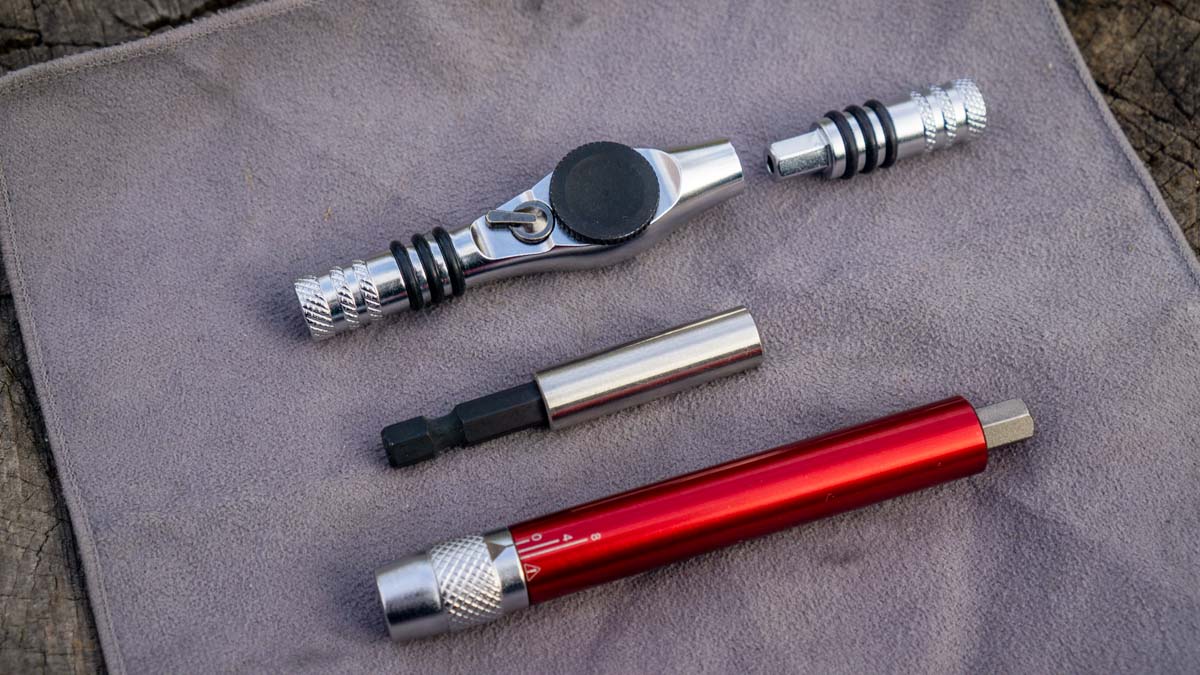
The kit pairs with a suite of interchangeable S2 steel bits that magnetically lock to the ratchet keeping them from falling out. The bits round out the set:
- Hex: 2mm, 2.5mm, 3mm, 4mm, 5mm, 6mm
- Torx: T10, T20, T25
- 2mm Phillips bit
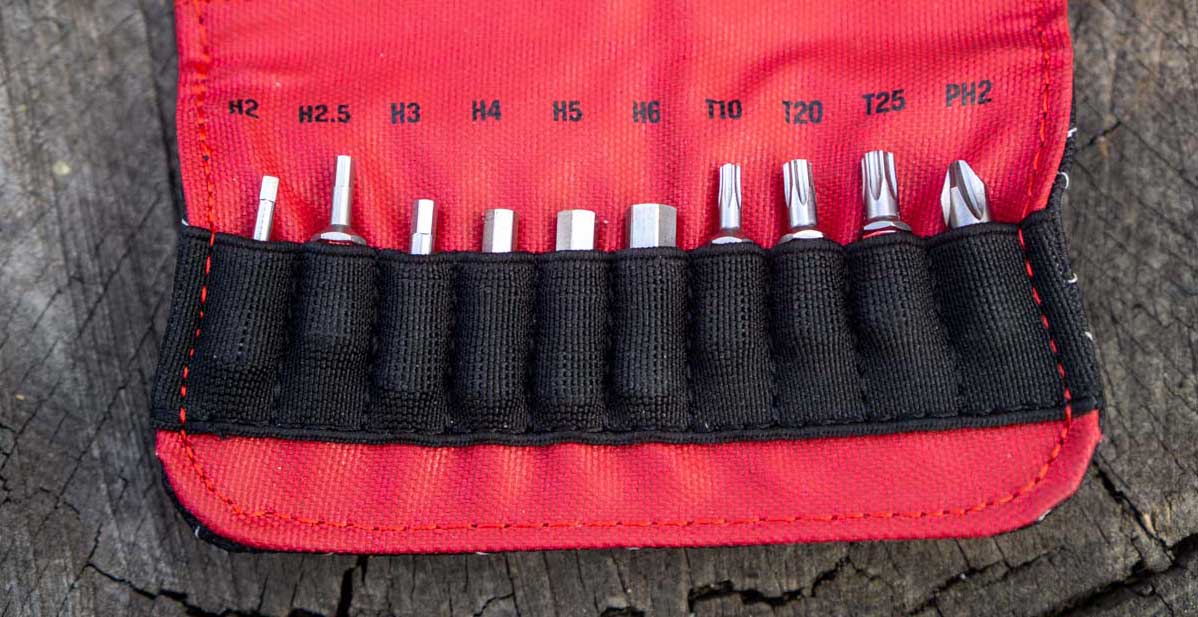
The butt of the ratchet has a magnetic port that keeps high-use fittings close so you don’t have to pocket the tip or dig back in the case for the bit.
Of course, the benefit of a ratchet is you don’t have to reposition the bit with every turn. Compared to a traditional multitool, the ratchet makes roadside repairs, building and breaking down the bike a breeze.
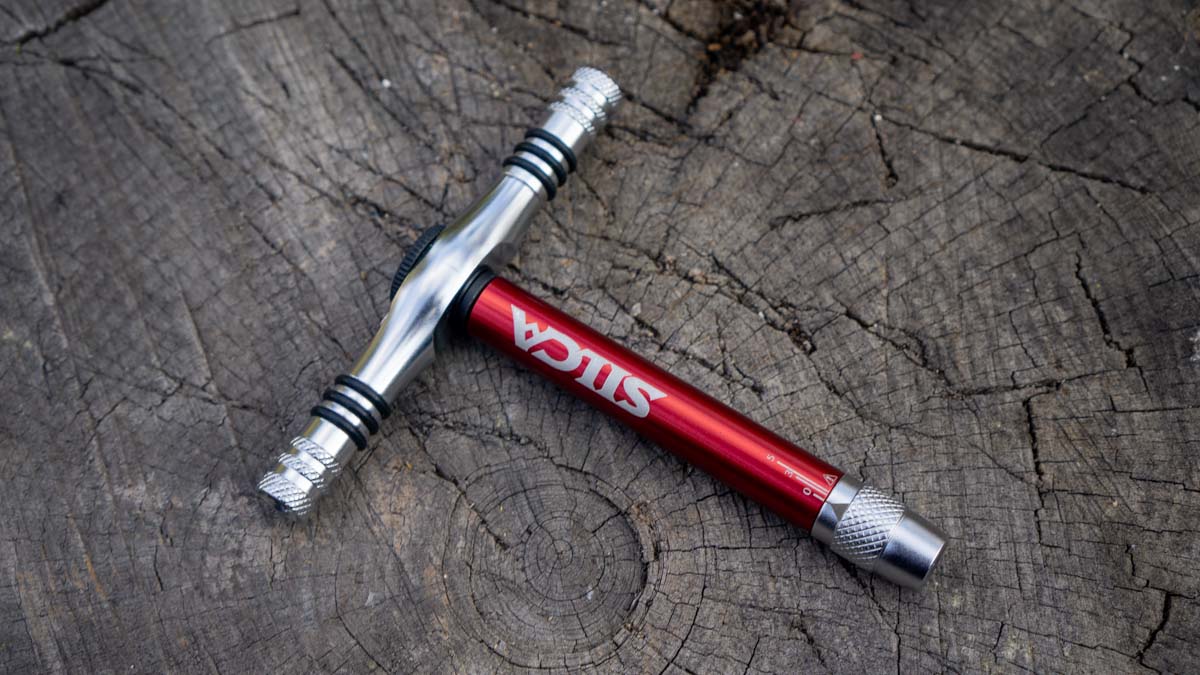

What elevates this kit to a super tool status is the unique torque tube. The torque tube has three scales that measure torque measurements 2-6, 3-5, and 4-8Nm, so you can wrench on carbon with confidence. No, those scales aren’t a “range”, they’re distinct increments for each, providing the precision we’ve come to expect from Silca.
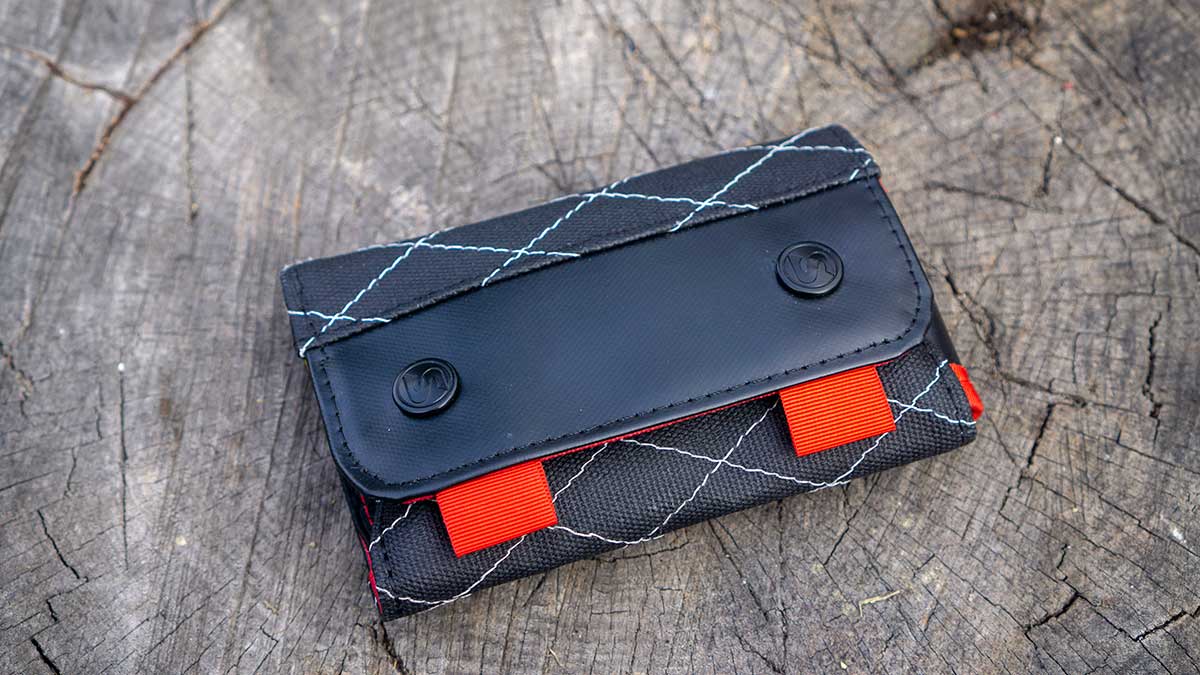
The entire kit folds up inside a handsome duck waxed canvas trifold case that slips in a back jersey pocket.
The T-Ratchet Kit by itself runs $50. That’s only a few bucks more than similar tools from other brands, making this a very easy recommendation. With the Torque Tube, Silca’s kit will set you back $100. If you already own the T-Ratchet Kit, the torque tube can be purchased after market for $50.

Gripes? We still have a few. The torque gauges increments are etched into the tube and rotate with each turn, so you may not be able to cleanly read the desired torque setting from your line of sight. And to accurately read the Newtons, you need to keep pressure against the spring. Provided you have a steady hand, it’s a ‘rough’ estimate. That and it doesn’t include an 8mm hex to thread pedals. I think this kit really shines for travel, but I ended up pulling the 8mm adapter off another multitool and put it on the 6mm hex to round it out.
Still, we feel these issues are a small price to pay for the peace of mind given when working on carbon. And if form and functional design matters to you, the Silca’s ratchet kit is second to none. The set has that heirloom quality that should last a lifetime. And if it doesn’t, Silca’s excellent customer service will back it up.
Silca Italian Army Knife Tool Venti – $45
While T-Ratchet and Ti-Torque kit is great for the bench or while traveling, it’s probably overkill for rides from home. Most of us just need a reliable multitool. To that end, Tyler chose to bring Silca’s Italian Army Knife.
Two models of Italian Army Knife are offered, the Tredici (13 tools, red, $36), and the Venti (20 tools, black, tested). Both are some of the more affordable Silca items, but don’t skimp on quality. All of the tools are forged, so they’re stronger. They’re also double chrome plated, and held together with stainless steel hardware and bushings. So, the usual overkill. The Tredici’s Tools include:
- Hex 2/2.5/3/4/5/6/8
- Torx® 10/20/25
- PH2/Flat
- DiscPadSpreader
The Venti adds:
- 7mm box wrench
- 8mm flare nut wrench
- 10mm open end wrench
- Valve core remover
- Spoke wrenches – 13G / 15G
- Forged chain breaker for 10-12 speed chain
- Magnetic storage for 10-12 speed compatible chain connectors
Five of those tools are built into the pad spreader. That piece slides into and is held in place with magnets, so it’s quick and easy to remove for better access to all the tools. It’s a small thing, but one you’ll appreciate when trying to use either part…nothing gets in the way of utility.
Tool size and weight is good (175g with pad spreader). Silca calls the tools “mid length”, but they’re still on the short end. It wasn’t an issue on any repair or job we had in Slovenia, and it keeps the tool compact, but fair warning that sometimes you need a little more reach. I used the Venti to both assemble and disassemble the Niner MCR, and make adjustments throughout the trip and it performed flawlessly.
Tattico Bluetooth Mini-pump – $120
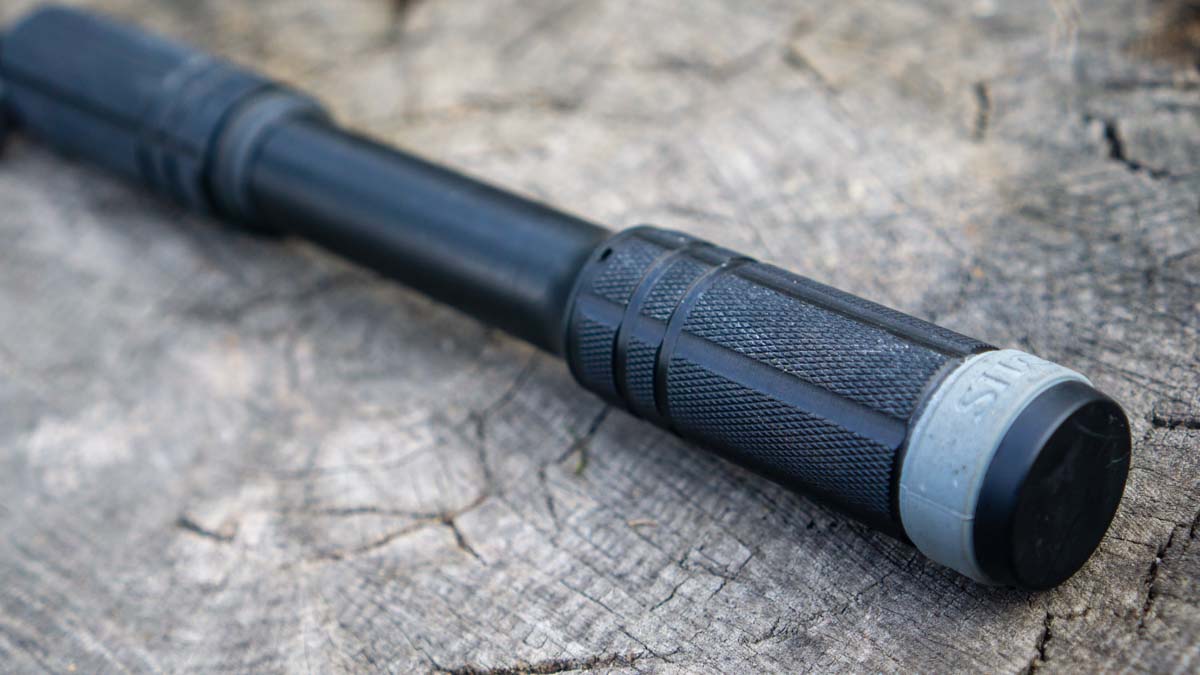
Traditional mini-pump gauges are bulky and have questionable accuracy. That and inflating high pressure tires can create a lot of heat. This can compromise o-ring seals and make the pumps hot when pumping high pressure tires.
When developing their own gauged mini-pump, Silca rethought the pump design to address all these issues, and, of course, put it all in a clean, durable packaged.
Like all of Silca’s products, you immediately feel the quality in the hand. The Tattico’s alloy body is machine turned and finished with textured scales for extra grip. The Tattico feels, well, almost… tactical.
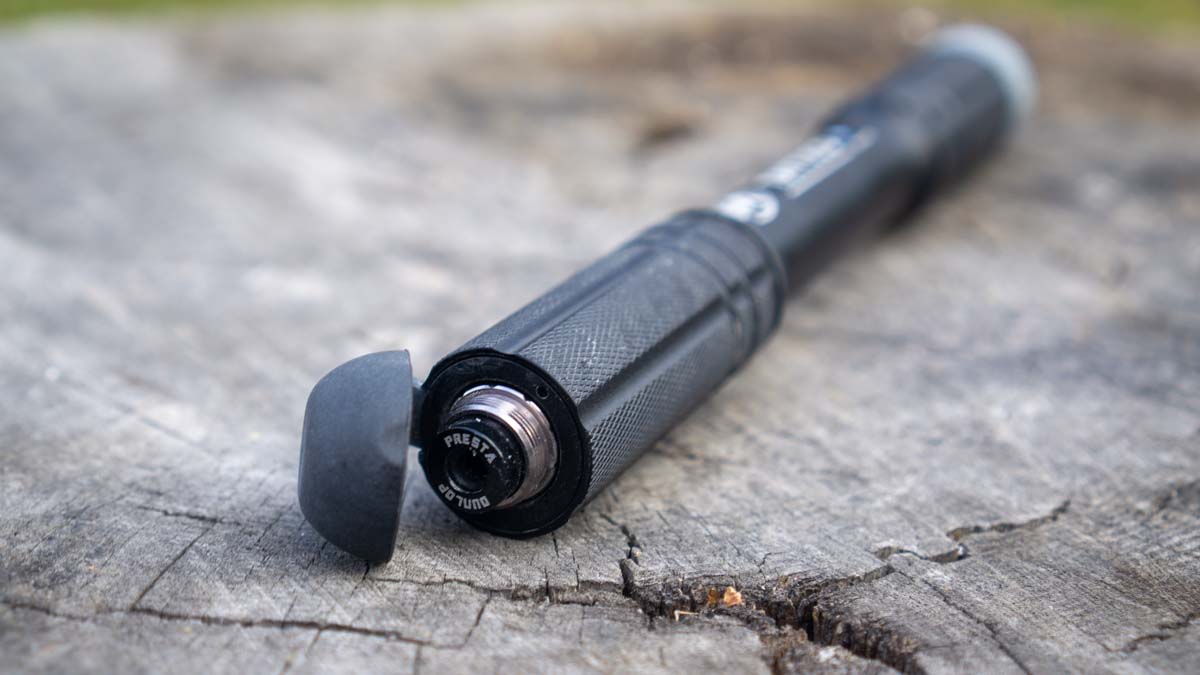
To reduce heat Silca created outer and inner barrels with an insulated air chamber between the them. The barrel also has a ‘heat sink’ at the end of it to absorb additional heat.
Remove the cap and a 9″ hose slides out of the barrel for a super clean presentation. Simply flip the rubber cap, pull the hose out and push it over the valve stem.

The chuck unscrews and flips over to fit either presta or schrader. The gasket locks to the nipple with the flip of the small lever.
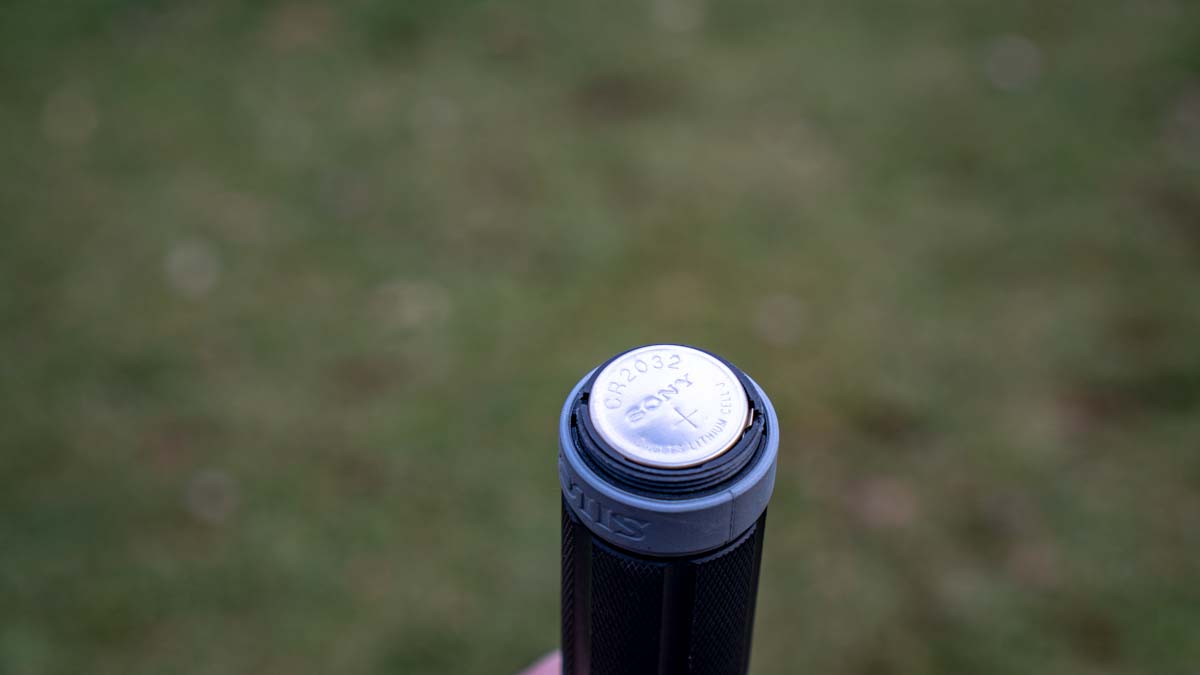
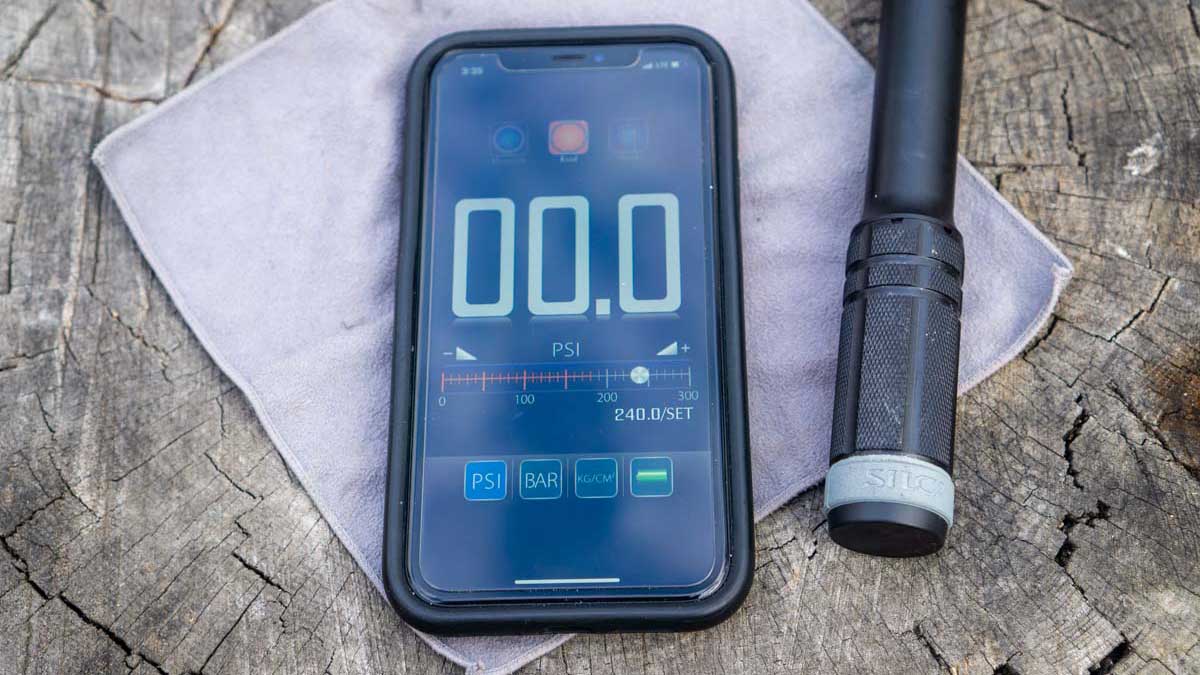
The pump’s gauge runs off a standard CR2032 watch battery and pairs with the iGauge app. When launched, the app synchs to the pump automatically and displays pressure in real time in PSI, bars, and KG/cm2. You can move the slider on the app to set your preferred pressure. A plus and minus button can dial in the setting.
How’d it work? At home I run WTB Horizons -a 47mm ‘slick’ tubeless tire- mounted to a 3T rim with a max pressure rating of 4 bars/60 psi (for a 45mm tire). The pump locked super tight to the nipple and remained wobble free. Once launched, the iGauge app quickly connected to the pump. I set the app to 50 psi – more than I’d run on the road, but enough to test the pump under stress. It took about 5-6 pumps for every .5 pounds of pressure increase. The resistance started to work the Popeyes after about 20 psi; that last 30 psi was a long push to the end. No chime or alarms, other than screaming forearms, you rely on the visual display to let you know you’ve achieved the desired pressure. And the barrel? It got warm, but not excessively hot.
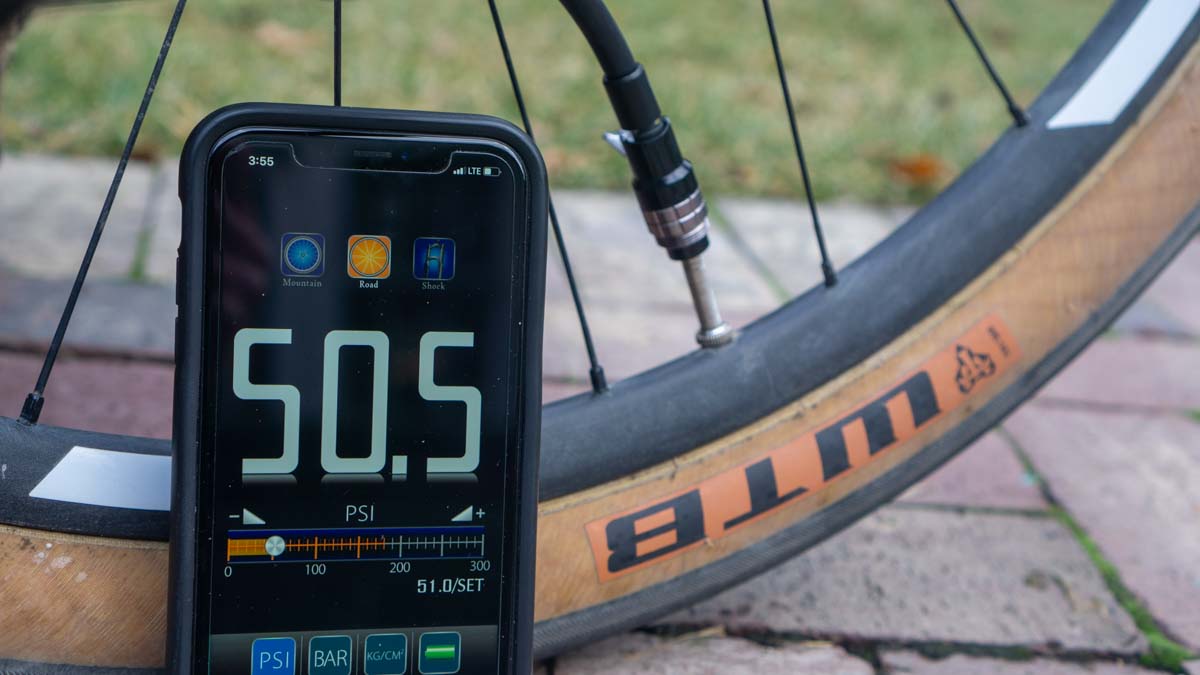
I flipped the lever and pulled -or tried to pull- the pump off the nipple. The Tattico’s gasket seals very tight the around nipple –which is a good thing– but requires some muscle to pull it off when you’re done. Air will escape if you mess with it too much.
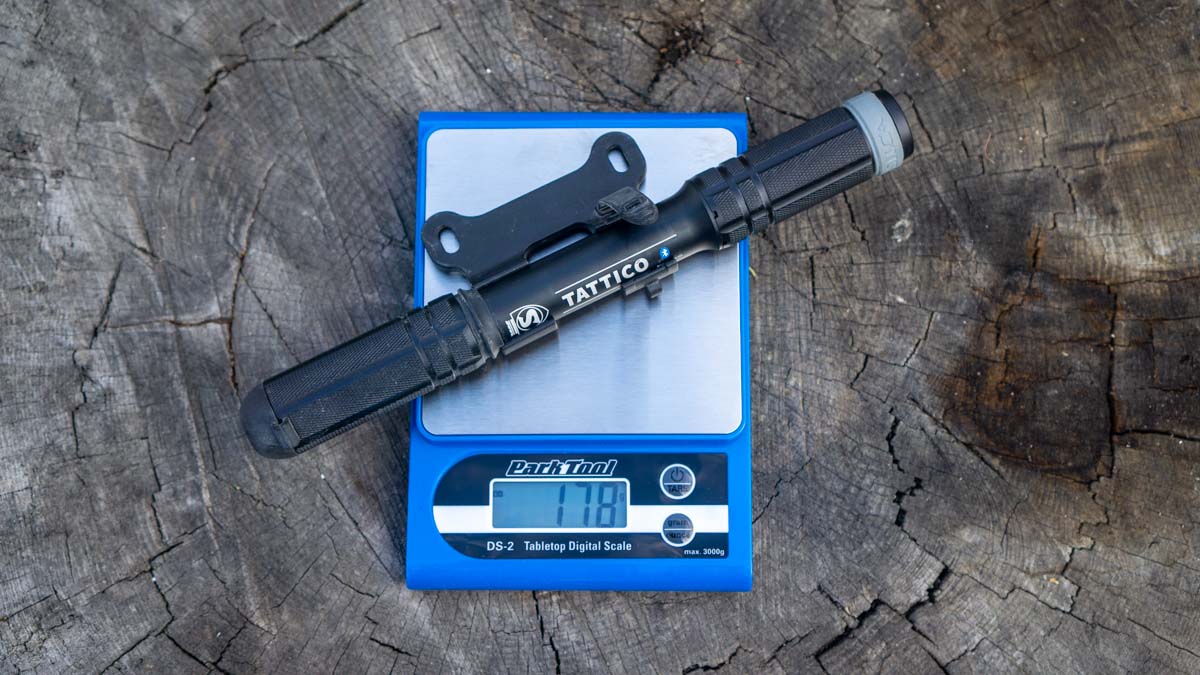
Gripes? Well, it’s the pump isn’t cheap ($120). And at 178g (on our scales, including the 16g bracket) the pump is heavier than many mini-pumps on the market. The double barrel construction, milled aluminum, battery – you pay for the quality in coin and grams. Also, the pump’s bracket mount is fairly narrow, and barely fits when racked on modern, fat carbon frames. That and the rubber band that secures the pump has a single hole to latch it around the bracket. Ours broke while traveling in Slovenia. An easier solution would be the more common oversized rubber band. I just hope the plastic cap will last as long as the pump.
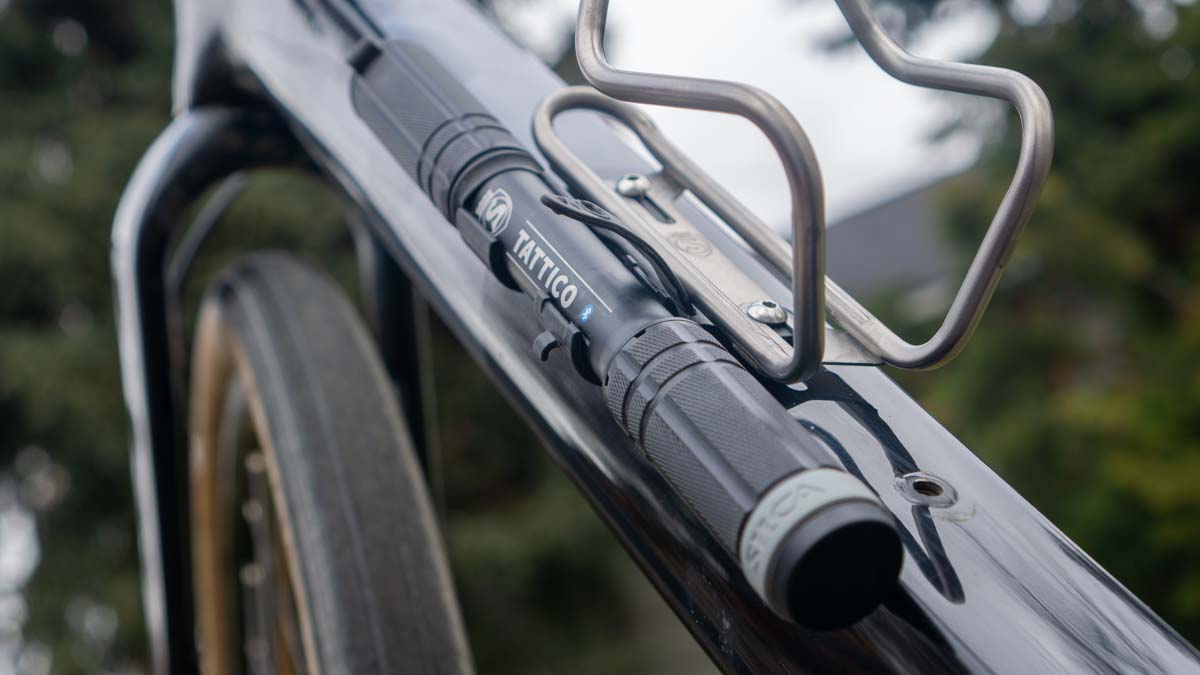
The pumps maximum pressure capacity is rated to 120psi and reputed to be accurate within 1% (though we weren’t able to test this). So it’s suitable for both mountain and road tires. And with a pump this beautiful, you may jump at the chance to inflate your buddy’s tire (who are we kidding, probably not). But you can monitor their pressure from you phone and tell them when to stop.
Silca Pocket Impero mini pump – $120
Silca describes their Pocket Impero as somewhere between a high volume and high pressure pump. So it’ll work for mountain bikes and road bikes, perhaps with a sweet spot for gravel. It’s small, just 8″ closed, so it fits easily inside a jersey pocket. But that translates to a short stroke, and lots of them to fill a tire. I counted somewhere around 300+ to get a 700×40 gravel tire up to rideable pressure. And about 400 to get a half-inflated 29×2.25 tire firmly inflated. To what PSI, you ask? Doesn’t matter. Because on the road or trail, we’re doing it by feel, and that’s how many strokes it took to get them feeling safely rideable.
The upside is, all of those strokes feel gloriously smooth. Silca uses a leather plunger, which only improves in performance over time. The strokes are light and easy, even when you start building up higher pressures. I found it worked best to keep a tight seal when holding it with the Presta-only valve head at the top of the tire, and the non-moving hand on the outside of the wheel. It has a silicone gripper on the top, but larger hands will go past it, putting them at risk of pinching.
It’s hard to argue with the compact size and 151g weight. But I think I’d opt for the standard (non-Bluetooth) Tattico pump at just $55, which has the same hose as Steve’s fancy electronic model and works with both Schrader and Presta.
Silca Sicuro titanium & carbon bottle cages – $70
The last piece of our puzzle was bottle cages. Both the Sicuro Ti and Sicuro Carbon retail for $70. Claimed weights are 29g and 26g, respectively, so it’s really just a matter of aesthetics. Steve ran the Ti cages, and Tyler opted for carbon (just 24g on my scale). We never lost a single bottle, so both grip extremely well. Yet they’re easy to get the bottles in and out of, too. Yes, there are a lot of good, lightweight bottle cages on the market that cost less, but having seen how these are made, we’re confident they’ll outlast cheaper options by years. And, c’mon, they look dead sexy.
Curious how they make their parts so well? Check out our Silca HQ tour, where most of the items are assembled, and you’ll see why you’ll never want anything else. Bonus discussion in our podcast interview with Silca founder Josh Poertner.
